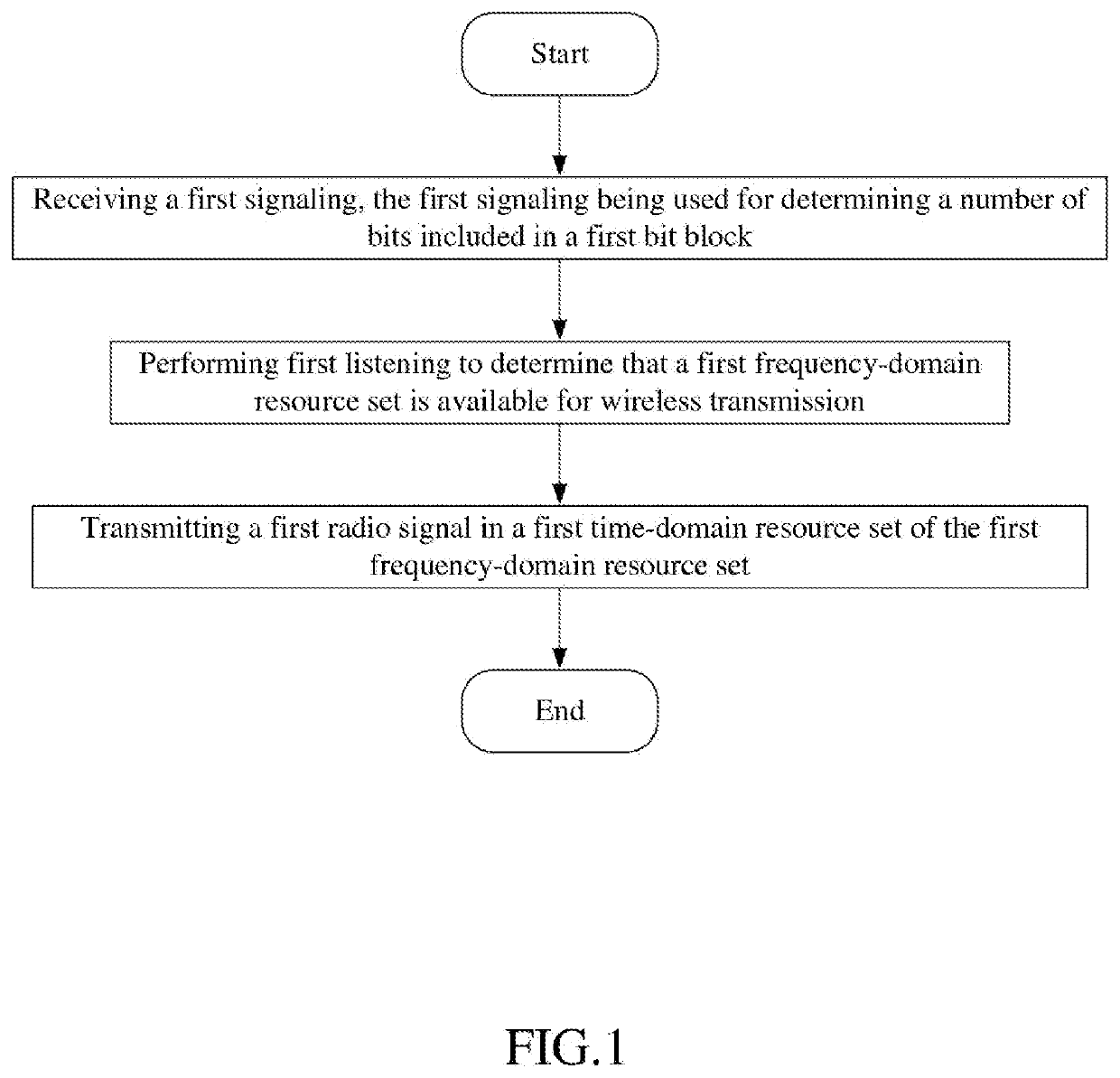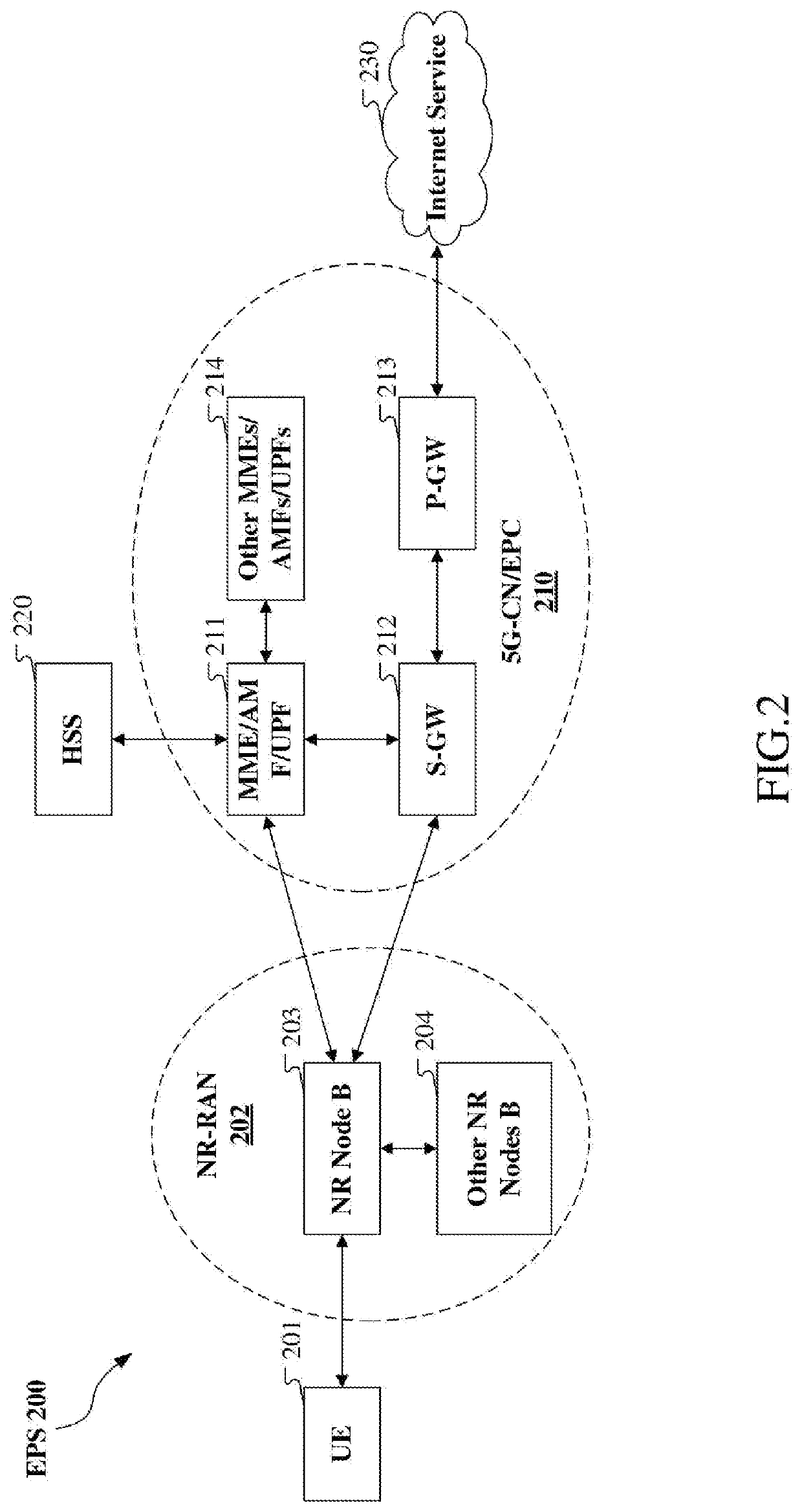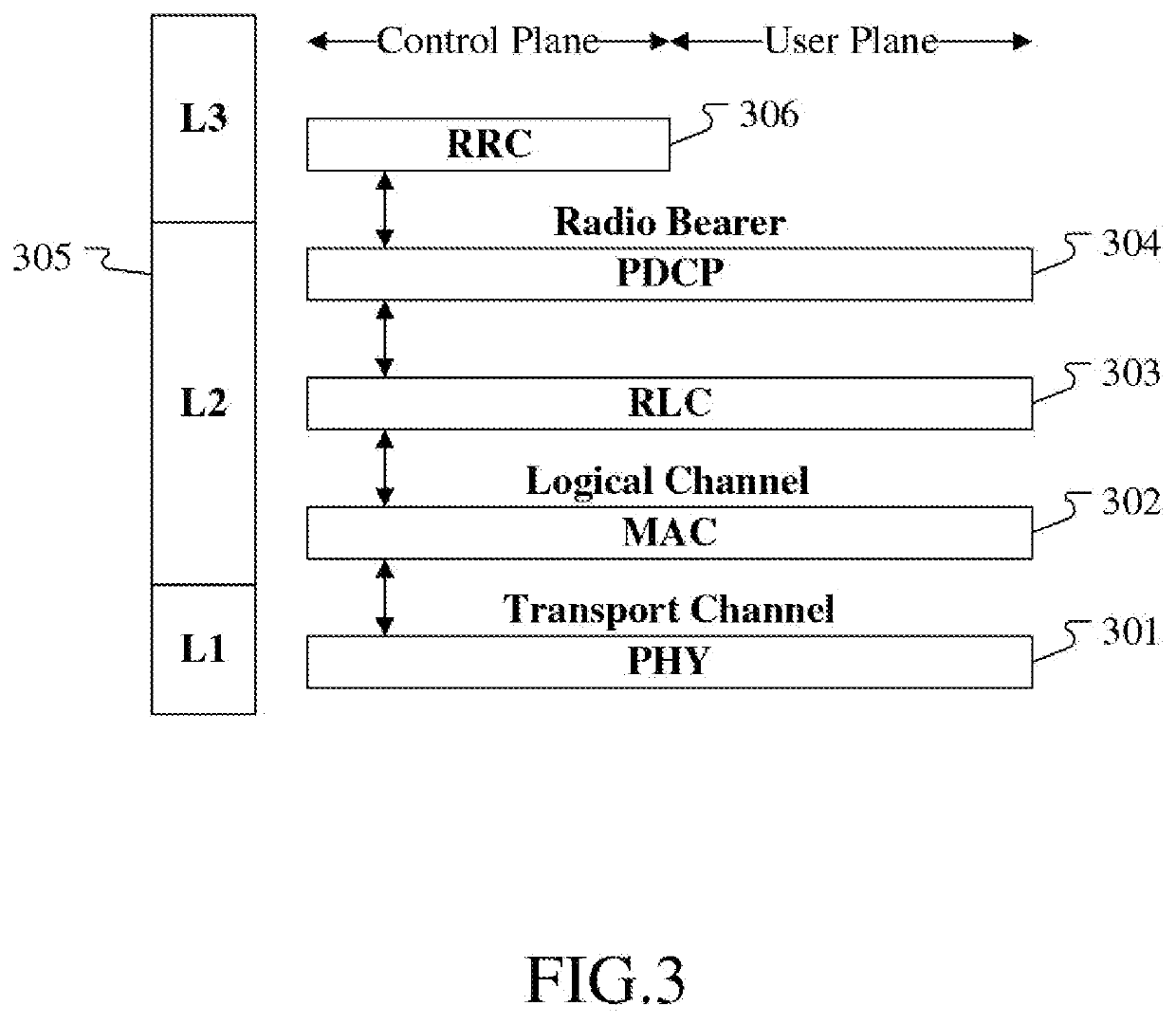Method and device in ue and base station for wireless communication
a wireless communication and wireless communication technology, applied in the direction of signal allocation, digital transmission, transmission path sub-channel allocation, etc., can solve the problems of wasting resources, wasting resources, and difficult to meet the requirements of services with conventional licensed spectrum, so as to achieve easy reception, high spectrum efficiency, and waste of resources
- Summary
- Abstract
- Description
- Claims
- Application Information
AI Technical Summary
Benefits of technology
Problems solved by technology
Method used
Image
Examples
embodiment 1
[0080
[0081]Embodiment 1 illustrates an example of a flowchart of a first signaling, as shown in FIG. 1.
[0082]In Embodiment 1, the UE in the disclosure first receives a first signaling, the first signaling being used for determining a number of bits included in a first bit block; then the UE performs first listening to determine that a first frequency-domain resource set is available for wireless transmission; and finally the UE transmits a first radio signal in a first time-domain resource set of the first frequency-domain resource set; a second bit block is used for generating the first radio signal, and the second bit block is obtained after the first bit block is processed through channel coding; and the first time-domain resource set is related to a number of bits not transmitted in a current second bit block and the first frequency-domain resource set.
[0083]In one embodiment, the first signaling is a UL grant.
[0084]In one embodiment, the first signaling is Downlink Control Info...
embodiment 2
[0151
[0152]Embodiment 2 illustrates an example of a diagram of a network architecture, as shown in FIG. 2.
[0153]Embodiment 2 illustrates an example of a diagram of a network architecture according to the disclosure, as shown in FIG. 2. FIG. 2 is a diagram illustrating a network architecture 200 of NR 5G, Long-Term Evolution (LTE) and Long-Term Evolution Advanced (LTE-A) systems. The NR 5G or LTE network architecture 200 may be called an Evolved Packet System (EPS) 200 or some other appropriate terms. The EPS 200 may include one or more UEs 201, a Next Generation-Radio Access Network (NG-RAN) 202, a 5G-Core Network / Evolved Packet Core (5G-CN / EPC) 210, a Home Subscriber Server (HSS) 220 and an Internet service 230. The EPS may be interconnected with other access networks. For simple description, the entities / interfaces are not shown. As shown in FIG. 2, the EPS provides packet switching services. Those skilled in the art are easy to understand that various concepts presented throughou...
embodiment 3
[0165
[0166]Embodiment 3 illustrates an example of a diagram of an embodiment of a radio protocol architecture of a user plane and a control plane according to the disclosure, as shown in FIG. 3.
[0167]FIG. 3 is a diagram illustrating an embodiment of a radio protocol architecture of a user plane and a control plane. In FIG. 3, the radio protocol architecture of a UE and a base station (gNB or eNB) is illustrated by three layers, which are a Layer 1, a Layer 2 and a Layer 3 respectively. The Layer 1 (L1 layer) 301 is the lowest layer and implements various PHY (physical layer) signal processing functions. The L1 layer will be referred to herein as the PHY 301. The Layer 2 (L2 layer) 305 is above the PHY 301, and is responsible for the link between the UE and the gNB over the PHY 301. In the user plane, the L2 layer 305 includes a Medium Access Control (MAC) sublayer 302, a Radio Link Control (RLC) sublayer 303, and a Packet Data Convergence Protocol (PDCP) sublayer 304, which are term...
PUM
 Login to View More
Login to View More Abstract
Description
Claims
Application Information
 Login to View More
Login to View More - R&D
- Intellectual Property
- Life Sciences
- Materials
- Tech Scout
- Unparalleled Data Quality
- Higher Quality Content
- 60% Fewer Hallucinations
Browse by: Latest US Patents, China's latest patents, Technical Efficacy Thesaurus, Application Domain, Technology Topic, Popular Technical Reports.
© 2025 PatSnap. All rights reserved.Legal|Privacy policy|Modern Slavery Act Transparency Statement|Sitemap|About US| Contact US: help@patsnap.com



